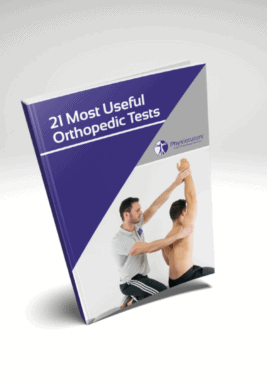Learn
Wrist/Hand Active Range of Motion (AROM) Assessment
AROM defines the range of motion through which the patient can actively move with the help of the muscles acting over that joint. The goal of AROM is to detect possible symptoms like pain and to determine their location, quality, and intensity. Furthermore, you will be able to see how freely your patient can move in a specific joint, while you are looking for compensatory strategies to achieve that movement.
The standard values for AROM movements in the wrist and hand are:
Pronation: 90° (occurs in the elbow)
Supination: 90° (occurs in the elbow)
Wrist flexion: 80°-90°
Wrist extension: 70°-90°
Radial deviation: 15°
Ulnar deviation: 30°-45°
Finger flexion:
- MCP: 85°-90°
- PIP: 100°-115°
- DIP: 80°-90°
Finger extension:
- MCP: 30°-45°
- PIP: 0°
- DIP: 20°
Finger abduction: 20°-30°
Finger adduction: 0°
Thumb flexion:
- CMC: 45°-50°
- MCP: 50°-55°
- IP: 85°-90°
Thumb extension:
- MCP: 0°
- IP: 0°-5°
Thumb abduction: 60°-70°
Thumb adduction: 30°
Thumb opposition: Patient is able to touch pinky with thumb
Read the following post in order to learn how to assess for passive range of motion in the wrist & hand.
21 OF THE MOST USEFUL ORTHOPAEDIC TESTS IN CLINICAL PRACTICE

References
–
Like what you’re learning?
BUY THE FULL PHYSIOTUTORS ASSESSMENT BOOK
- 600+ Pages e-Book
- Interactive Content (Direct Video Demonstration, PubMed articles)
- Statistical Values for all Special Tests from the latest research
- Available in 🇬🇧 🇩🇪 🇫🇷 🇪🇸 🇮🇹 🇵🇹 🇹🇷
- And much more!








